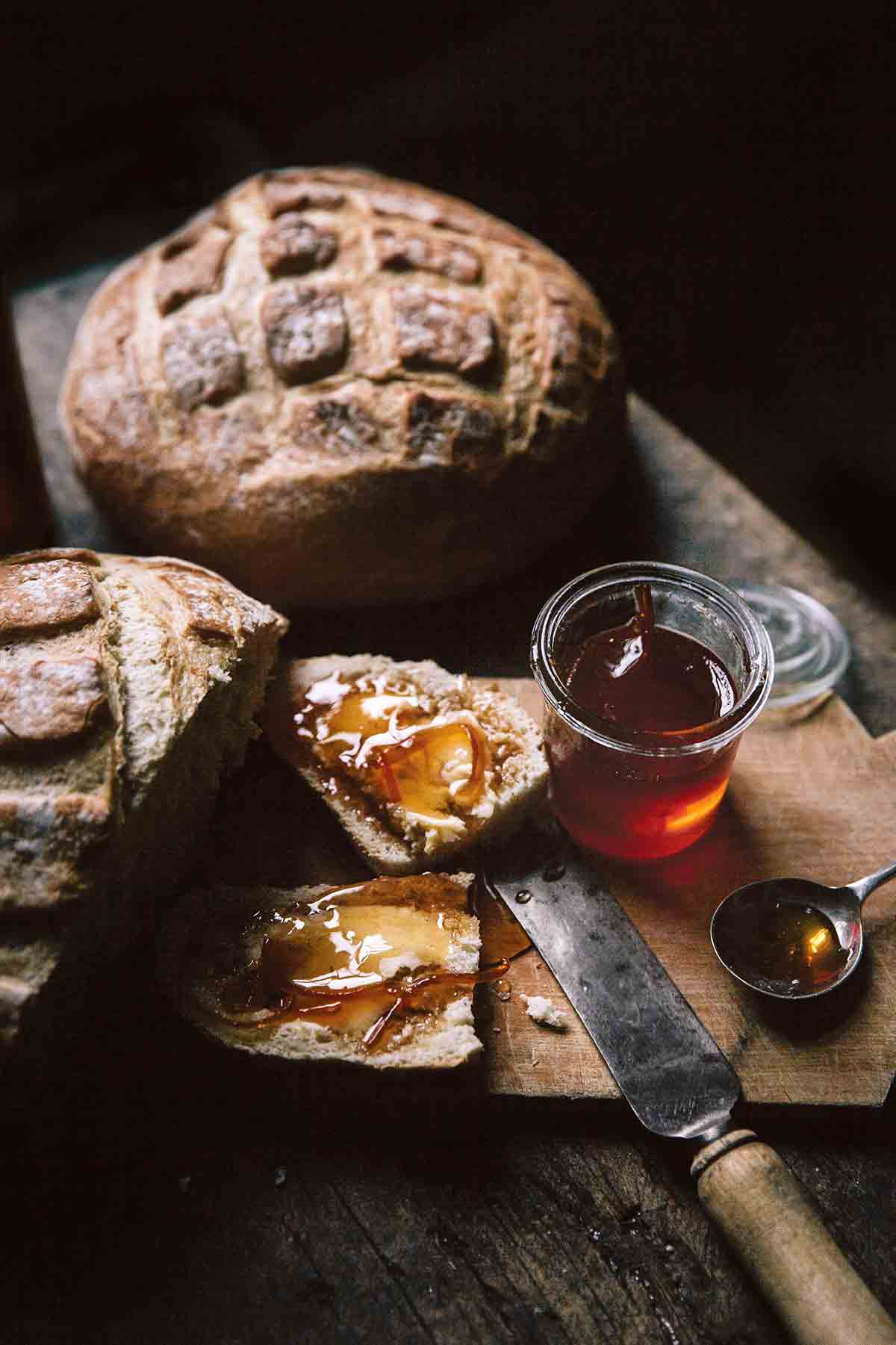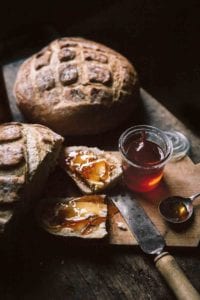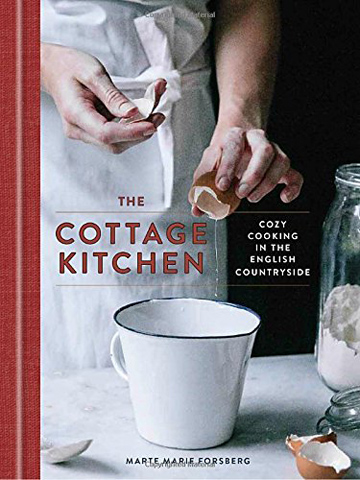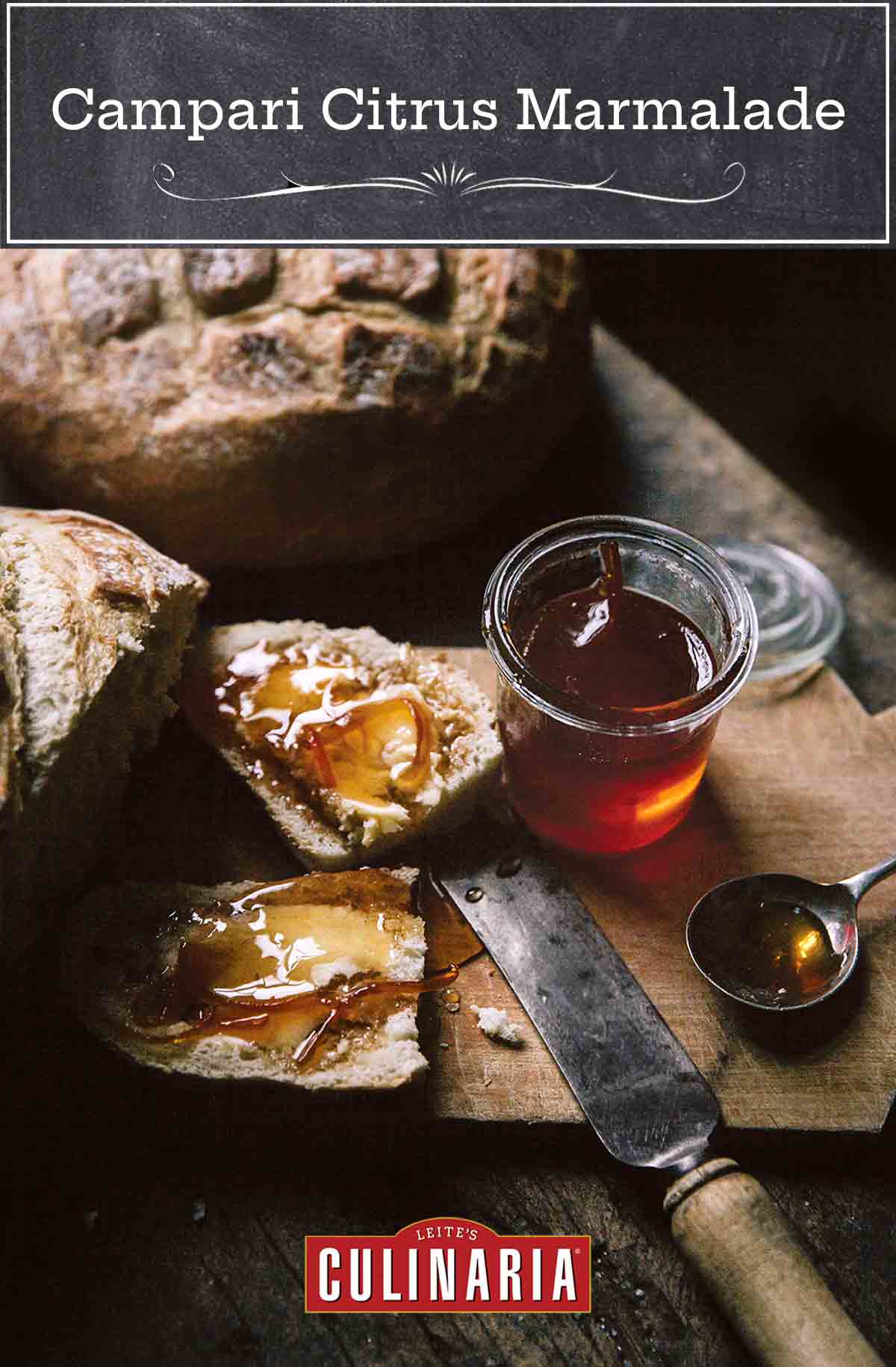
If you’ve always been a little uncertain about trying the classic bitter English marmalade, give this Campari citrus marmalade a twirl. It’s a slightly sweeter, definitely boozier version made with a mix of orange, grapefruit, and lemon, and while we’ve always appreciated traditional marmalade, we’re welcoming this with open arms.–Angie Zoobkoff

Campari Citrus Marmalade
Ingredients
- 2 large unwaxed oranges, preferably Seville
- 2 (about 1 3/4 lbs) unwaxed grapefruit
- Juice of 2 lemons (about 1/3 cup)
- 6 1/3 cups cold water
- 7 1/2 cups granulated sugar
- 1/4 cup Campari
Instructions
- Using a sharp knife or peeler, carefully remove the zest from 1 orange and 1 grapefruit, avoiding the underlying white membrane. Thinly slice the zest.
- Remove and discard the white membrane from the zested orange and grapefruit and also remove the peel and membrane from the remaining orange and grapefruit. Coarsely chop the fruit.
- In a food processor, blitz the fruit and then pass them the mixture through a fine mesh strainer placed over a bowl, pressing down with the back of a spoonn to extract as much juice as possible. Discard the pulp. (Alternatively, you can use a juicer.)
- In a large saucepan over medium heat, combine the juice and add the zest and water. Cover and bring to a boil. Uncover, reduce the heat to low, and simmer for 2 hours.
- Add the sugar and Campari and stir until the sugar dissolves. Let the mixture continue to gently boil, stirring frequently, until the marmalade is slightly thickened, 45 to 60 minutes. To test if the marmalade is ready, drop a spoonful of marmalade onto a cold plate. Run your finger or the edge of the spoon through the marmalade. If the space stays visible, the marmalade is ready. If not, keep boiling, stirring occasionally, for another 5 to 6 minutes and test again.
- When the marmalade is done, remove the saucepan from the heat and let it cool for 5 to 8 minutes before discarding any scum or foam visible on the surface.
- Sterilize 3 pint or 6 half-pint jars and lids and prepare a water bath canner. Ladle the marmalade into the sterilized jars, if desired using a funnel or creating a cone from parchment paper, and hot water process. Keep the sealed jars at room temperature for up to several months.

Nutrition
Nutrition information is automatically calculated, so should only be used as an approximation.
Recipe Testers’ Reviews
Oh, I really enjoyed making this marmalade. The colors and aromas were fabulous. Even if you’ve never canned before, please give this a try. You will be very proud of your efforts! I got the same response from each person who tasted it…that long, low, “Wooooow.” That’s when you know you got it right. 🙂
After peeling, I placed the oranges in a food processor and gave them a spin. Then I poured the juice through a strainer and pressed on the pulp with a wooden spoon to get “every single drop of juice.” This was a good method. Pressing oranges unprocessed through a strainer seemed like a difficult plan. I believe I got more juice this way, too.
I used the wooden spoon method for testing but I only ran my finger across the back once. It’s very hot! I used a spatula in place of my finger for the rest of the tests. I would advise dripping a little liquid on a small plate and using a finger substitute to run through it to test. My wooden spoon has a shine to it, and it was very hard to see what exactly was happening on each test.
I would recommend using a funnel for pouring the marmalade into jars. I didn’t have one, but was able to fashion a “cone” out of parchment paper to make sure the jars stayed clean while filling. The marmalade is a very sticky, honey-like consistency and also very hot.
Adding Campari to marmalade was a hard sell to someone who’s been making marmalade for 90 years, but in the end my Mom gave a thumbs up to this marmalade recipe and so did I.
Although her failing eyesight makes it difficult to cook on her own, Mom was thrilled to be back in the kitchen. Together we made 10 small jars of great marmalade. Although it wasn’t great grandma’s recipe, it was still yummy. This marmalade has a depth of flavor that wasn’t expected from a “pulp-free” style marmalade. I enjoyed the smaller amount of skin and pulp, though Mom felt it could use more. This reminded me of pulp versus low-pulp orange juice debates.
The jeweled color of the marmalade was beautiful. Following the instructions in the recipe led to a difficult time extracting the juice. Without a power juicer, I tried several methods and ended up chopping the peeled fruit and then straining. If you are planning on hand juicing , I would suggest juicing the citrus before peeling.











I’m going to try this even though I fear it will be too sweet. What would you think of substituting Fernet Branca?
We have only tested this using Campari so I’m not sure if it would be successful, bill. If you make it, please let us know how it turns out.
Tell you what, Karen: I’ll give a Fernet Branca version a try if you will provide me with the info necessary for a sugarless version. I have family members and friends who are diabetic. Sugar is anathema to them, and I feel bad about making stuff they can’t eat.
bill, we would love to hear how a Fernet Branca version turns out. The sugar is needed in the marmalade to help it thicken and it would be best to start with a recipe that is developed as sugar-free or with low sugar. If any of our readers have tips for this we would love to hear them.
I will compose my mind in patience, hopefully awaiting news of the experience and advice of other members. I did try a sugar-substitute once, using erythritol, and it was a catastrophe!
Thanks, bill.
Could you do this using OJ and grapefruit juice from the carton?
Andrew, you could, but you still need the zest from the fruit for your marmalade.
Angie and Andrew: orange zest can probably be obtained from many delis and convenience stores that cater to a take-out breakfast trade. Many of them offer fresh-squeezed OJ from machines that cut and squeeze whole oranges on the premises. Just ask for the hulls they’re going to throw out anyway. At the joint on my corner they’re happy to give me all I want.
bill, I like the way you think. Thanks!
For those of us who do not care to use the cold plate method, at what temperature is this marmalade set?
Steve, 220°F/104.5°C is a middle set point for marmalade. The range is 217°F to 222°F/104.5°C to 105.6°C.